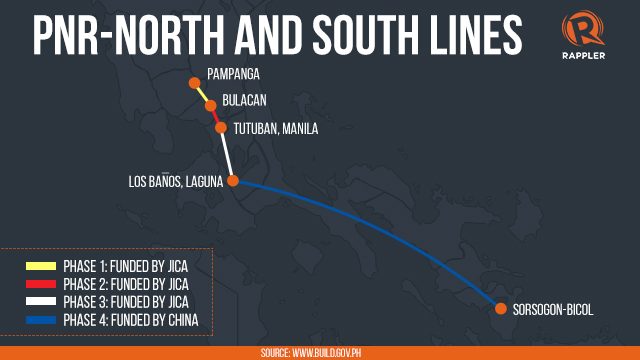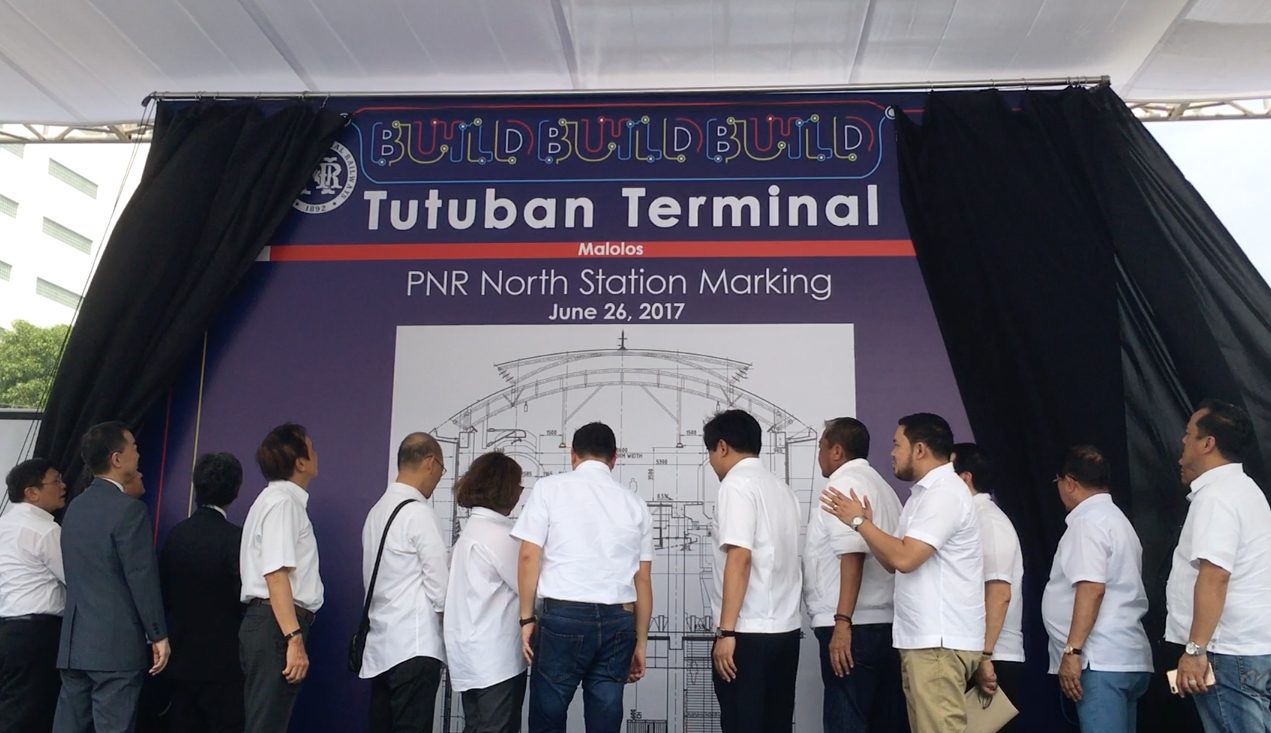SUMMARY
This is AI generated summarization, which may have errors. For context, always refer to the full article.

MANILA, Philippines (UPDATED) – The Chinese government is seen to fund the P151-billion, 581-kilometer railway that will connect Laguna to Sorsogon in Bicol, said Transportation Secretary Arthur Tugade.
If realized, this would form part of the longest railway project in the country so far. Its first 3 phases, the 107.5-kilometer railway connecting Manila to Clark in Pampanga as well as the 72-kilometer Manila-Laguna commuter line, will be funded by the Japan International Cooperation Agency (JICA). (READ: 17 stations of Manila-Clark Railway announced)
The two projects cost P225 billion and P134 billion, respectively.
“We would like to have partnerships with countries using their own technologies. What the economic cluster decided is that the group of Luzon will go to the Japanese government and that the group of Bicol hopefully will go to the Chinese government,” Tugade told reporters on the sidelines of an event in Manila on Monday, June 26.
“If we put two systems in one place, I will have a problem of mutual relevance and compatibility,” he added.
Timothy John Batan, Transportation Assistant Secretary for rails, clarified that the third phase of the railway, the Manila-Laguna commuter line, will still be funded by JICA.
The project was initiated under the name North-South Railway Project in 2015, the last full year of the administration of President Benigno Aquino III. It was also during the Aquino administration when the Philippine government and JICA signed a $1.99-billion (P105-billion) loan deal for the line segment that connects Tutuban, Manila, to Malolos, Bulacan.
The P150-billion railway line segment that will connect Malolos, Bulacan, to Clark, Pampanga, will also be funded by JICA, Tugade said.
JICA said that once implemented, this “could be a game changer in the Philippines’ public transport system whose population density is 19,000 people for every one square kilometer,” which is higher than in Tokyo and most other Asian cities.

South segments
The first two segments, Tutuban-Malolos and Malolos-Clark, will start construction in the last quarter of 2017 and will be completed by the last quarter of 2021.
Meanwhile, the signing of the official development assistance (ODA) for the last two segments – Tutuban-Laguna and Laguna-Batangas-Quezon-Camarines Sur-Albay-Sorsogon – has not been done yet.
“It stands with rhyme and reason that we spread out the market. I want to start activities that are not covered by legal requirements of procurement and bidding; [otherwise] I will lose time,” Tugade told reporters.
The Department of Transportation said the railway will connect cities, international seaports, and economic zones, allowing for faster movement of passengers and cargo.
The Aquino administration had auctioned off the south line of the project (Manila-Sorsogon). The Duterte administration then decided to continue the segment by financing it through ODA from Japan and China.
“With the government, we can borrow with a lower cost. We don’t need return on investment,” Budget Secretary Benjamin Diokno earlier told Rappler. (READ: Duterte gov’t calls off auction for South Line of North-South Railway)
Tugade told reporters that the massive Mindanao railway project (MindaRail) might also be funded through ODA from China.
During President Rodrigo Duterte’s state visit to China, the Philippine government was able to bring home a $9-billion loan deal from credit facilities to be made available for businesses, development projects, and infrastructure, among others.
Around 17 memoranda of understanding were also signed by Chinese and Philippine firms during the visit. Some Chinese firms involved, however, have questionable track records. – Rappler.com
Add a comment
How does this make you feel?
There are no comments yet. Add your comment to start the conversation.